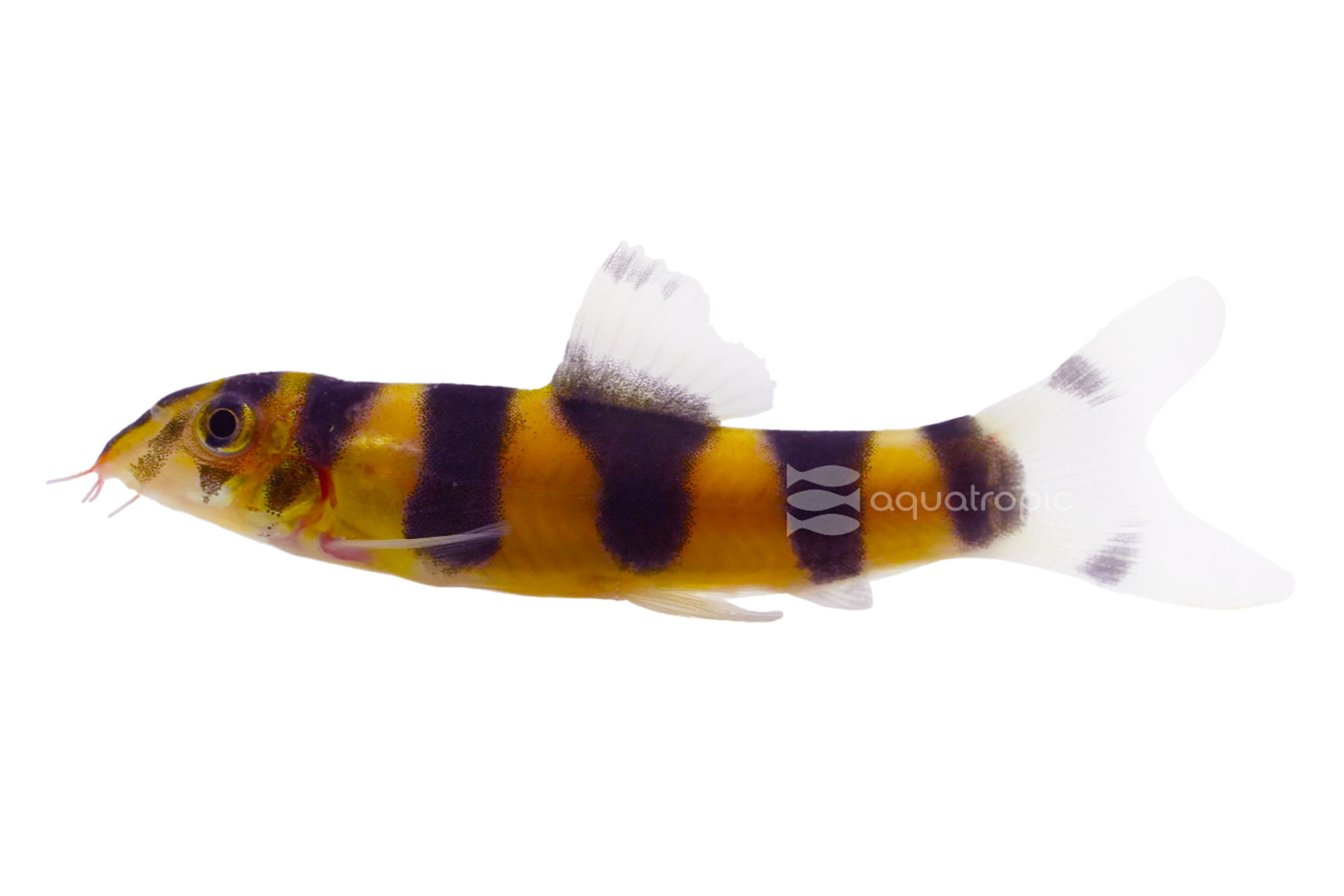The Emperor of Loaches

The Emperor Loach (Botia udomritthiruji) is an amazing aquarium fish, that comes from a very limited natural range, being found only in the Tennaserim River and its tributaries in Myanmar (which used to be Burma.) This is a small country, with a dangerously unstable political and social environment. Access to the country for any purpose is wrought with challenges, and in the past, the river drainage itself has had many environmental challenges. This leads to massive difficulties in acquiring wild caught specimens, and near impossibilities in assessing the health of the wild population even if harvesting was feasible. As such, the only Emperor Loaches we sell, and indeed, the only ones you are likely to see until things settle down in Myanmar in your Local Fish Store are either aquacultured or prohibitively expensive. As such, for many loach enthusiasts, this fish has long been a holy grail fish!
The uncommon nature of this loach, and the fact that it was only recently described for science (2007 by Dr Heok Hee Ng) leads to it having very few common names, “The Emperor Loach,” “The Emperor Botia” and in Estonian “Keiserbootsia” which google translates as “The Emperor's Boots” but is more likely just google not separating Bootsia from Botia. Prior to its description, it was sometimes called Tennaserim Loach. It got its scientific name to honor Kamphol Udomritthiruj, a Thai Ichthyologist.
Emperor Loaches are a small fish, never really getting much bigger than four inches long, though some as big as a shade over five inches long have been reported. They have a beautiful barred body, with very distinctive and stunning Bengal tiger striping. Like all the fish in the Botia genus they are very social animals, and should always be kept in groups of five or more. The traditional rarity and expense of acquiring of one of these fish meant that they were unlikely to be kept in groups of their own species. Luckily, they blend well with other Botia loaches, as they can become reclusive and even temperamental when kept as solitary specimens.
Aquariums for Emperor Loaches should be large enough to house a group of them; five would do well in a tank that was 55 gallons and 75 would be better as they offer more footprint than the 55. These fish will usually stay near the bottom of the aquarium, and as such, depth of display is not very important. Displays should be planned with good flow and filter overturn, shoot for filtration that turns the entire volume of the display over ten times per hour. If you utilize a lower turn over filtration system, additional flow can be added with powerheads. Lighting should be subdued, though they can be acclimated to higher lighting scenarios with care and patience. They will appreciate a soft substrate for them to dig around in, rocks and driftwood should be smooth edged to keep them from harming their barbels and soft bellies. They will insert themselves into any nook and cranny they can, so be careful when planning a display to leave them a way out of all the caves you make!
There is not a lot of information on the water profile in the Tennaserim River, as a result of the bloody state of political affairs in Myanmar. This being said, these fish have done well for us in systems that have water in the mid to high 70 degree Fahrenheit range, with pH between 6.5 and 7.5 and in a variety of water hardness. They like a lot of oxygen and are fairly intolerant of nutrient build up. Make sure filtration is up to the task, and regular, large water changes are part of your aquarium keeping regimen.
As we referenced, ideally these fish would be kept in groups, and mixed species groups of Botia Loaches is possible. Other good tankmates include fish like Zebrafish, Raspboras, Danios, Barbs, freshwater Sharks and catfish small enough to not eat them. They are low risk to plants, but because they prefer a low light display, some plants won't be feasible, some floating plants can help provide them with the shade they prefer.
Once they are acclimated, it is easy to feed Emperor Loaches, they will greedily take a wide range of frozen (thawed) foods, like Gamma Food's Bloodworms, Tubifex, Artemia and Mysis. They will need some vegetable matter in their diet as well, some aquarists swear by blanched zucchini and cucumber discs for feeding Botia, but in house we utilize the Algae and Color Boost Shots from Nutramar. These offer them a dietary profile that is more rounded and designed for fish, in a shot that can be easily stuck to rocks or glass where they graze on it at their leisure. They accept this readily and do well on it. Emperor Loaches will relish live foods like small earth worms or tubifex, but this should be done sparingly. Nutramar Live Artemia are also available through Aquatropic partners for those of you interested in rounding out your Loaches diet.
For those of you who are Loach enthusiasts, the aquacultured availability of Emperor Loaches marks and epic day in history. Now a fish that was basically unavailable to you is a possiblity! For the rest of you, this is an excellent aquarium fish, that is both attractive and active for the lowest portion of your water column. For those of you with massive aquariums, this fish can be kept in groups as large as you want! If you've been waiting for your chance to get some Emperors, the time has come! Just head to your LFS and tell them that Aquatropic has your Aquacultured Emperor Loaches in stock!